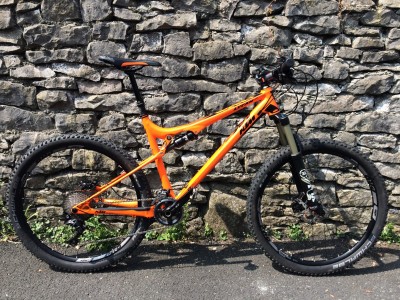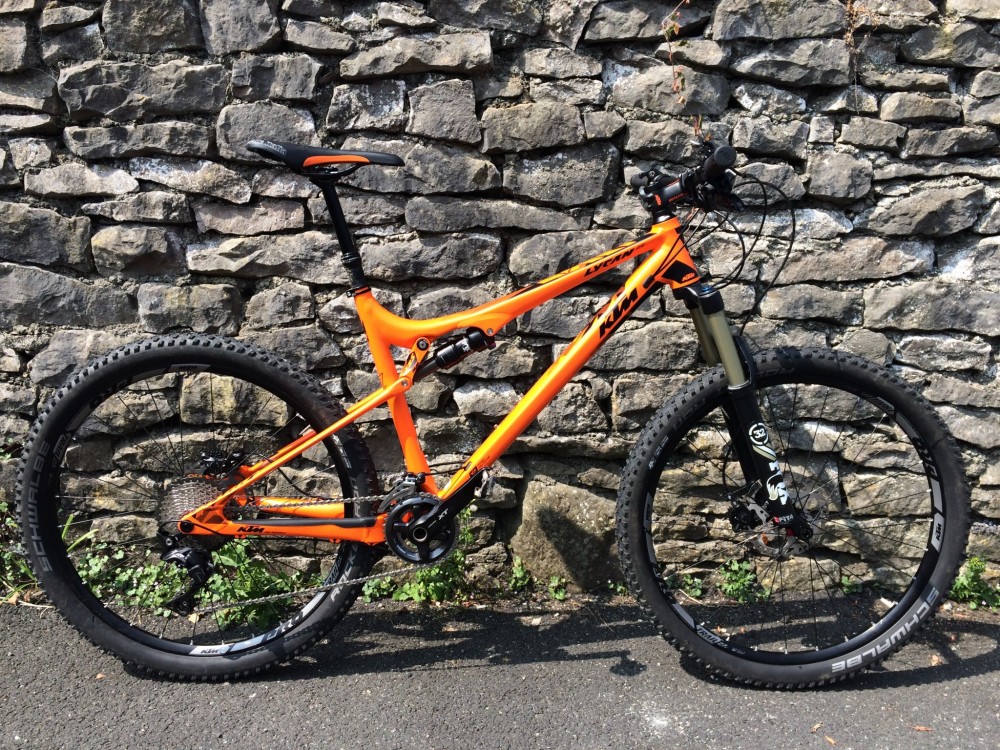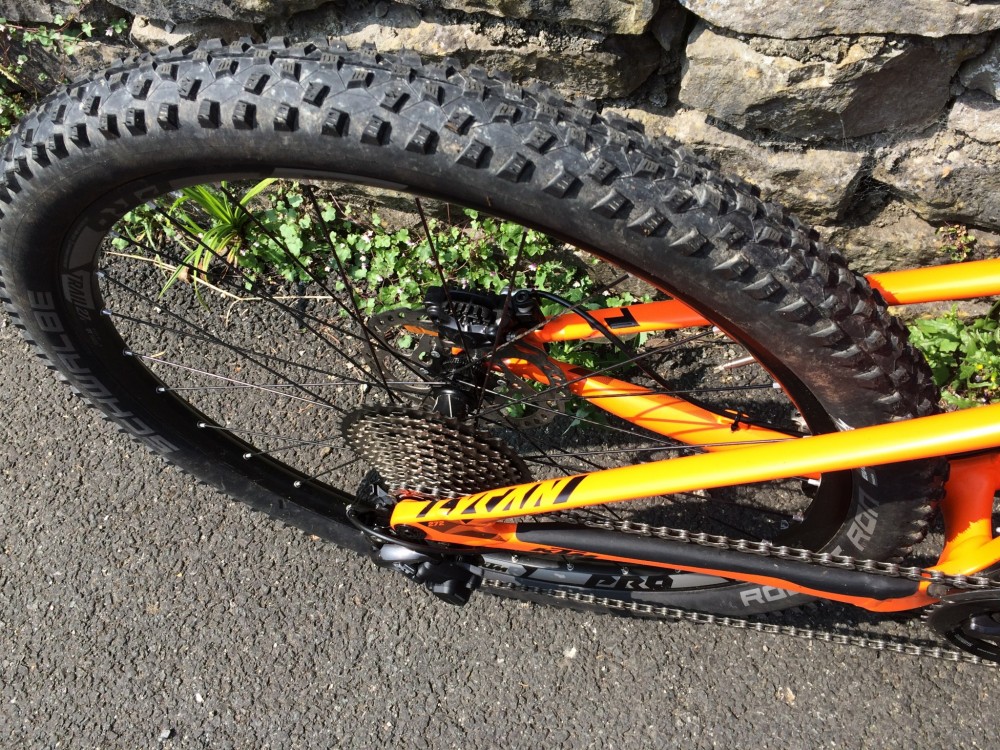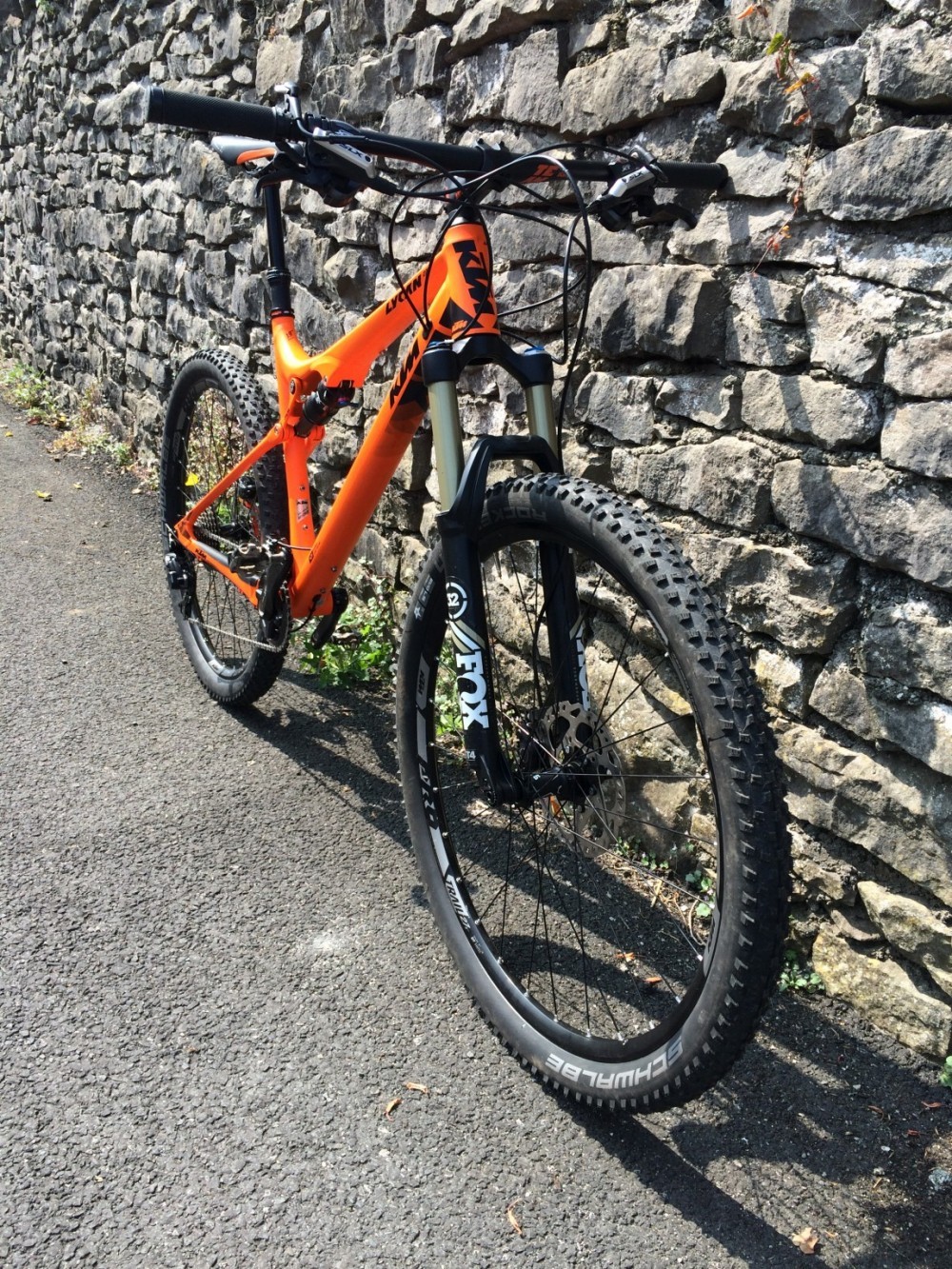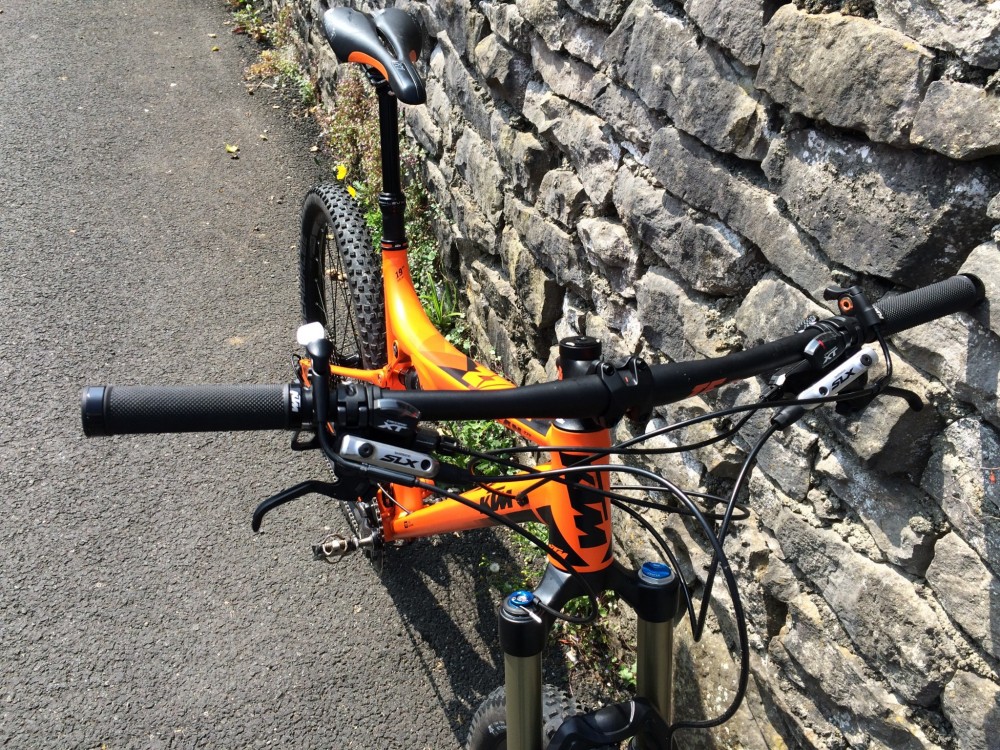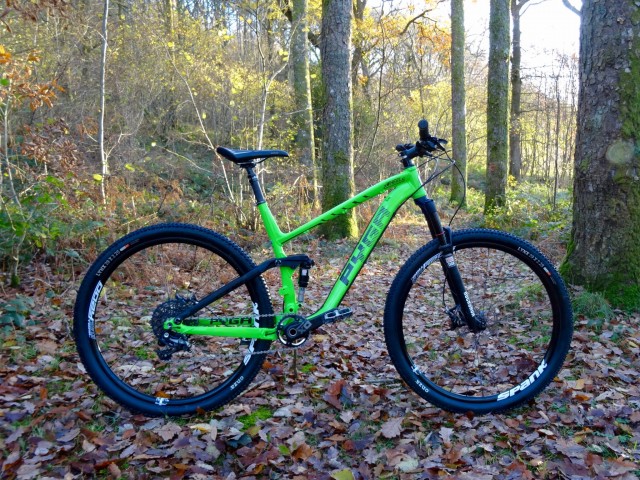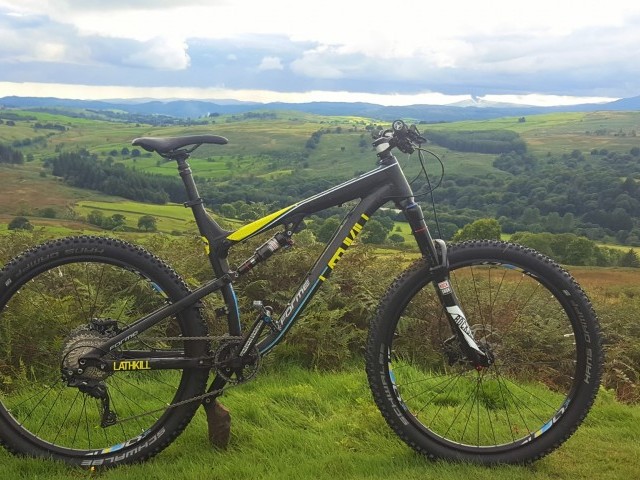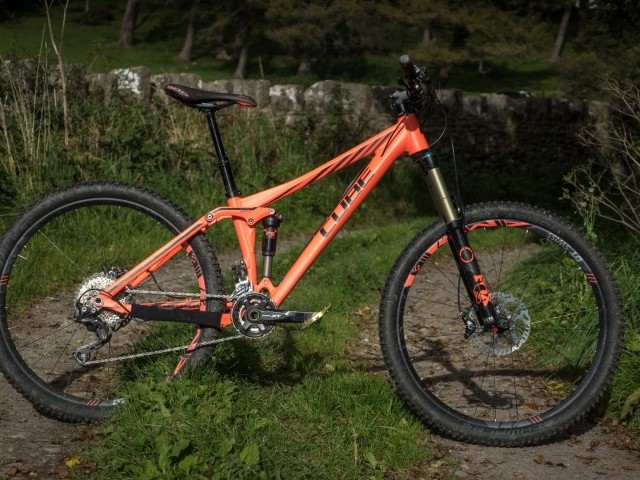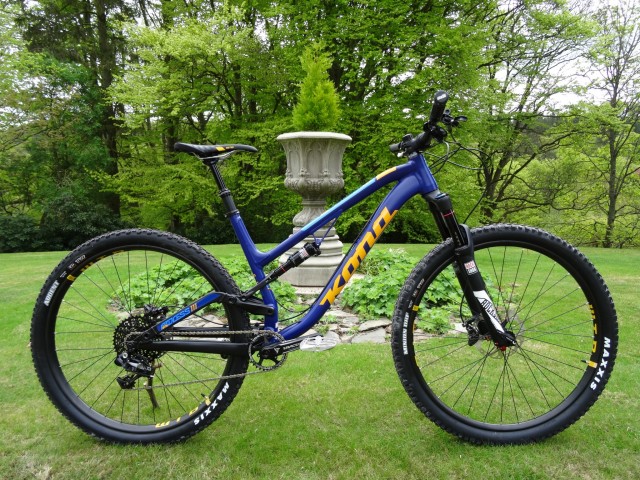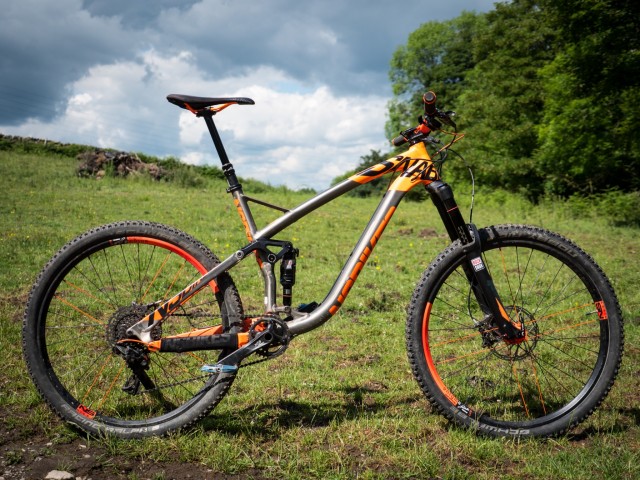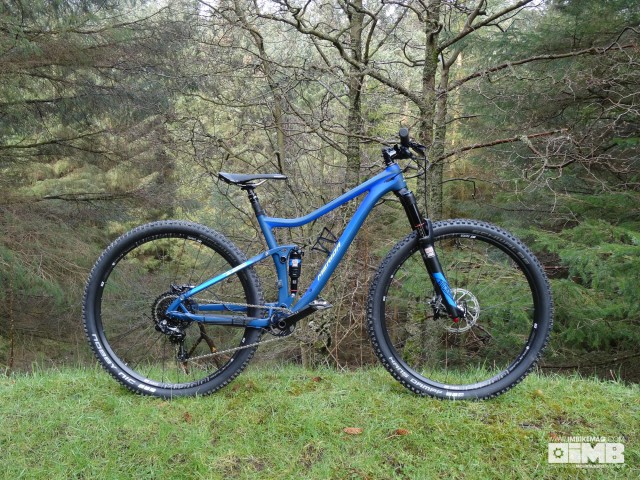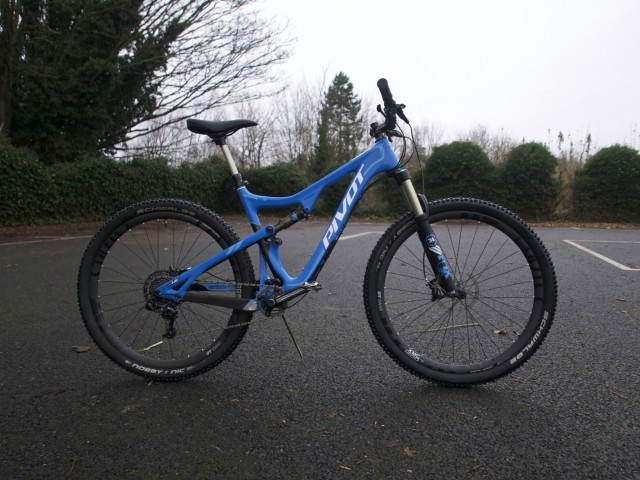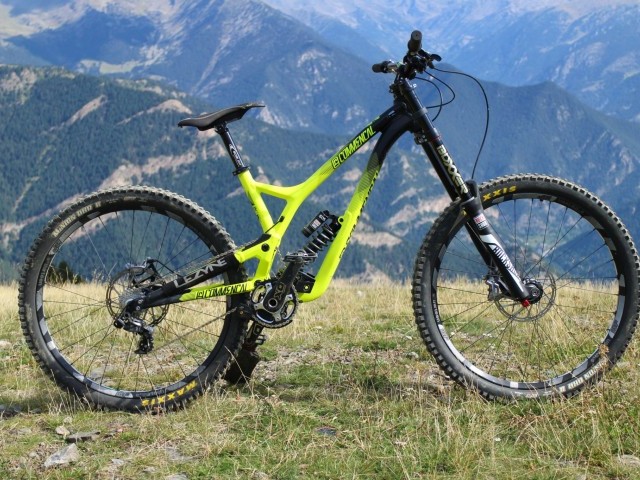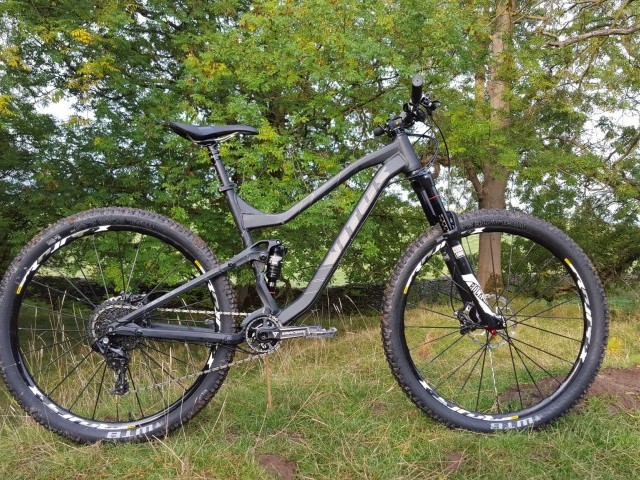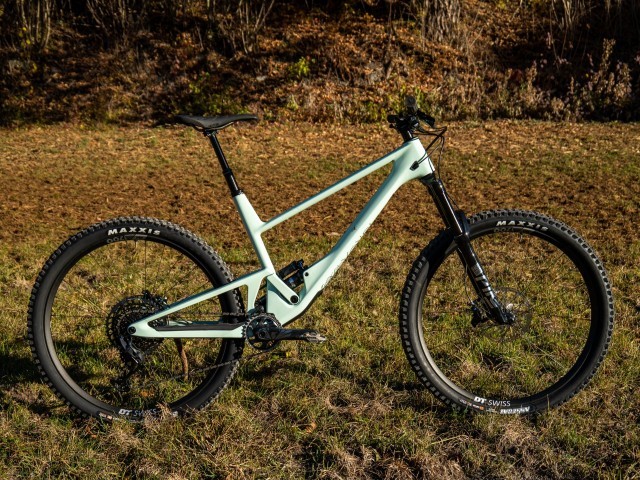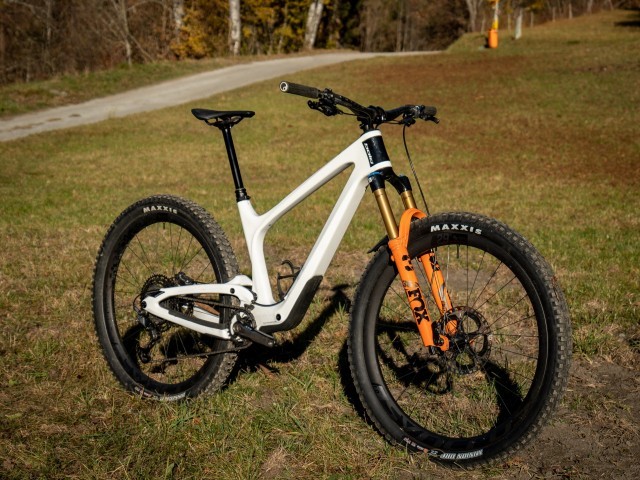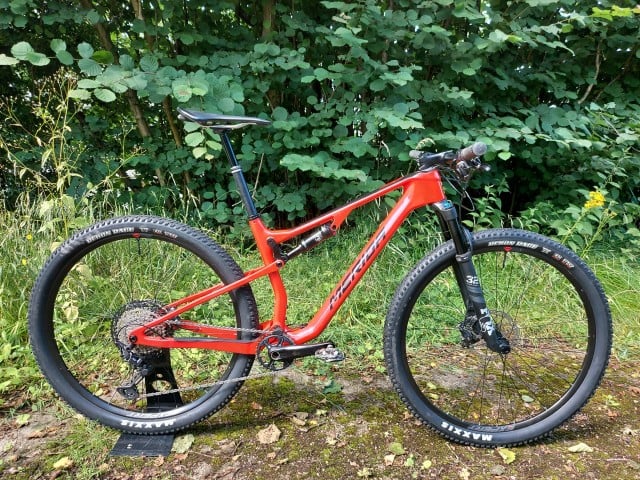At A Glance
KTM have been making production bicycles since 1964, and they have a deep heritage in the industry. Mountain bikes entered their stable when the sport was started, and they made their first aluminium MTB frame in 1994. They had a lot of success on the XC race circuit in the early days and by 2005 they were making carbon machines for just about every discipline. Since then the range has grown and encompasses just about every kind of bike with off road tyres that you can think of.
Buy Trail Bikes on
The bike in hand, the Lycan 272 22s/33s Deore XT fits neatly into the short travel trail bike category. Featuring 125mm of rear travel and Fox 32 Float 27.5-130mm fork up front with the FIT4 damper and 15mm thru axle. The Lycan doesn't have the slackest of head angles, but this is only a mid-travel bike. The frame is a very tidily finished triple butted alloy affair, with Fox taking care of the shock as well as the aforementioned fork, which also features a remote lockout. There is a Full Shimano 11speed XT drivetrain with a double (26/36) chainring up front and an 11-40 tooth cassette out back to give an abundance of gears.
Braking is covered by the well-mannered Shimano SLX brakes complete with finned pads and Ice Tech rotors for those looooong European descents. A KS LEV 100mm post takes care of the up and down of the saddle which itself is a comfortable offering if a little lightweight for some tastes I would imagine. The rolling stock is supplied by a pair of unobtrusive but efficient DT Swiss straight pull hubs laced to DT/KTM branded rims, mounted on which are a pair of Schwalbe Rocket Ron tyres.
All in all the Lycan 272 is a very efficient looking creature, which should perform admirably as a short travel trail bike.
On The Trail
How does it ride? With only limited time on the Lycan, it was more of a short term fling rather than a long-term relationship and as such this represents more of a first impressions perspective on it. Fit wise, the Lycan felt about right for the size L that we were sent, and a quick look at other bikes numbers bear this out, plenty of stand over, and it certainly wasn't cramped in the reach department.
Uphill the Lycan was a delight! Light enough to not be overly hard work especially when the ground became steeper than average, the 26 tooth small chainring and 40 tooth cassette certainly helped this too, allowing me to keep the wheels turning until the tyres gave up their tenuous grip, but more on that later. Once on the flatter or perhaps more trail orientated bits of riding the bike was again a treat to ride, light and nippy on the flowing parts and stiff enough to put unexpected efforts in when the terrain demanded.
Downhill? Well, as long as things were restrained to the less rocky and less steep terrain the Lycan did very well, However, take the bike out of its comfort zone, and you start to notice it. There are two main culprits for this lack of confidence, the long 70mm stem and the Rocket Ron tyres. While nothing to do with the bike itself, the tyres were my biggest gripe at this point, the Rocket Ron’s may provide a wonderful lack of rolling resistance for getting from A to B at speed. What they do not do very well though is grip, this may be a personal preference but I have always preferred a tyre with a bit of substance and tread. When the ground gets both steep and loose in either the upward or downward directions, it's good to know your rubber will back you up.
These tyres are great for racing, but for trail riding they just aren't up to the job? The tyres specced are also Schwalbe's “Liteskin” model, which, as far as I could tell, meant the sidewalls are made of paper, this, coupled with perhaps the lightest inner tubes I have ever seen led to some fairly catastrophic pinch flats both front and rear. This was on terrain that I wouldn't even class as particularly rocky, amounting to a total of 14 holes between the two wheels in just two independent incidents!
However, shod with some more appropriate rubber, the Lycan was well-mannered and great fun to ride. It tackled ascents with a sure-footed manner and was taught and stiff enough to deliver good pace on the flats and pointed towards the more gravity fed terrain. Another small issue I found though was that the controls could do with a little more thought. Neither the seat post or fork remotes integrated with the other controls on the bar. They were always either too far away or in a very awkward position; it is the small details that make the bike after all.
The bars too felt a touch narrow for my liking at 720mm and felt a slightly awkward shape. The other thought I had while pedalling uphill was whether a double chainset was really necessary? There are two reasons behind this; one is obvious, do you need that many gears? To be quite honest, despite past misgivings, I think that now with the advent of genuine wide range cassettes, coupled with a suitably sized single chainring, they really aren't needed.
The other reason for my thinking on the Lycan would be to de-clutter the very busy handlebars and allow the dropper remote to integrate better, thus making it much more user-friendly. In terms of the running gear itself both the SLX brakes and XT drivetrain performed flawlessly, just as we have come to expect from Shimano and their many years of experience and service. The only niggle being a slight rattle from the brake callipers but I'm more than prepared to overlook that for the reliability they provide.
As I said at the start of the review, unfortunately, I wasn't able to test the bike for as long as I would have liked. Off the back of the time I had, I did come up with a few thoughts, which initially sound a little drastic. For me, they would be worth it, though, as always these would be my preferences based on where and how I ride. The Lycan is not an all out race bike, and as such to really get the 'trail' aspect of this bike working properly there are a few tweaks which would make it a fair more capable trail bike.
Firstly chuck out the tyres and tubes, fit something both meatier and with more strength in the sidewalls, both for grip in the steeps and strength and puncture resistance. Secondly, throw out the front mech and fit a 30 tooth chainring, you don’t lose a lot in the way of gearing and most people will have given up pedalling well before that sort of gear is necessary! As a result, this would also help tidy up the cockpit and allow the post remote to integrate much better. Also, I would consider a shorter stem and wider bars (720mm is pretty narrow these days), I feel this would improve the descending capability of the Lycan dramatically, and due to the length of the top tube, it would have minimal effect on its uphill capabilities.
Overall
All these suggestions of component swaps may sound like some relatively significant changes but, if you think about it, they are just a matter of making the bike fit. Both physically to the rider and also for the purpose you have in mind for it. If the Lycan wants to compete as a trail bike, these alterations will help it to perform. With all this in mind, I think the Lycan, while having a few faults, has a lot of potential for someone wanting a relatively lightweight bike that can be pushed into a variety of roles with a little bit of work. Had I the chance to keep the bike for longer I would gladly have spent some more time with it on my local trails in the Lake District.
Buy Trail Bikes on
This review was in Issue 42 of IMB.
For more information visit KTM Bike IndustriesRelated
By Matt Martindale
Matt Martindale is a rare breed, capable of riding for days on end without sign of fatigue and still able to navigate the steep and technical with style, simultaneously putting both Enduroists and XC types to shame. As comfortable on a single-speed 29er as a 160mm full bouncer, his breadth of knowledge and experience give him fantastic insight into what really makes a great bike.

